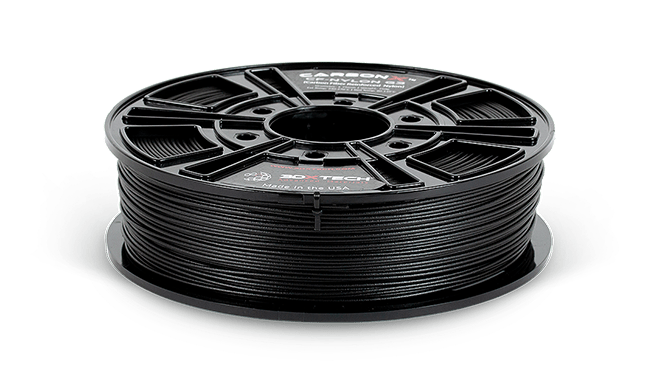Polyamide (PA, Nylon)
Polyamide is one of the most used materials in the industry. It comes with many grades and can be filled with various fibers, spheres or nanotubes.
Polyamide is one of the most used materials in the industry. It comes with many grades and can be filled with various fibers, spheres or nanotubes.

Nylon main feature is a very high tensile strength. The material is strong and has good tribological properties. On the other hand, it assures good elasticity and low moisture sensitivity of the printed models. Most common grade of the filament is PA6.
PA Neat is dedicated to industrial applications. The material is strong and has good tribological properties and on the other hand, it assures good elasticity and low moisture sensitivity of the printed models.
PA Neat provides continuous use at 120°C, maintaining sufficient mechanical properties and high-temperature resistance. It is a perfect material for producing durable prints that need to perform.

PolyMide™ is a family of Nylon/polyamide-based filaments.
Produced with Polymaker’s Warp-Free™ technology, PolyMide™ filaments deliver engineering properties unqiue for Nylon and ease of printing. PolyMide™ CoPA is based on a copolymer of Nylon 6 and Nylon 6,6.
The filament combines excellent strength, toughness, and a heat resistance.
This industrial material is highly chemically and heat resistant. Comparing to standard PA material, the carbon-filled nylon is less susceptible to thermal shrinkage. It’s easier to control the material during the print process.
PA6-GF30 is a polyamide 6 copolymer, reinforced with 30% of glass fiber. The material shows exceptional stiffness and strength, but at the same time, the brittleness is very low. It has an excellent mechanical, chemical and thermal resistance that makes it suitable for a range of engineering and industrial applications. This grade of PA6 material can be easily used in the automotive industry as it shows particular resistance for fuels, lubricants, heat and high mechanical loads. Depending on the mechanical load it can withstand temperatures even up to 150°C. Dynamical load and creep resistance are also relatively high. Glass fiber reinforced polyamides have the ability to damp the vibrations. Due to high abrasive properties and friction coefficient, PA-GF materials are not suitable for the applications that include slipping and sliding.
PA6-GF30 also features improved dimensional stability – glass fibers reduce shrinkage, lift, and warp. The lamination of the layers is very strong.
PA6-GF30 is highly abrasive, please make sure you use the correct consumables and parts in the extruder.
The material is approved for contact with food. It is necessary to follow the rules of the Nylon filament storage since the material is highly hygroscopic.
Low volume production
Additive manufacturing is frequently more cost-effective than other legacy manufacturing methods, allowing the rapid production of end-use parts at scale, reducing tooling and inventory costs and accelerating the time tp market.
End Use Parts
In many instances the mechanical properties and surface characteristics of 3D printed parts meet and exceed the customer’s expectation, allowing their use in the actual product.
Prior to launching mass production, engineering and designers benefit from 3D printing functional prototypes that can help verify fit, functionality and optimum integration with other components, accelerating the iterative development cycle and time to market.
We will help you to choose the right material